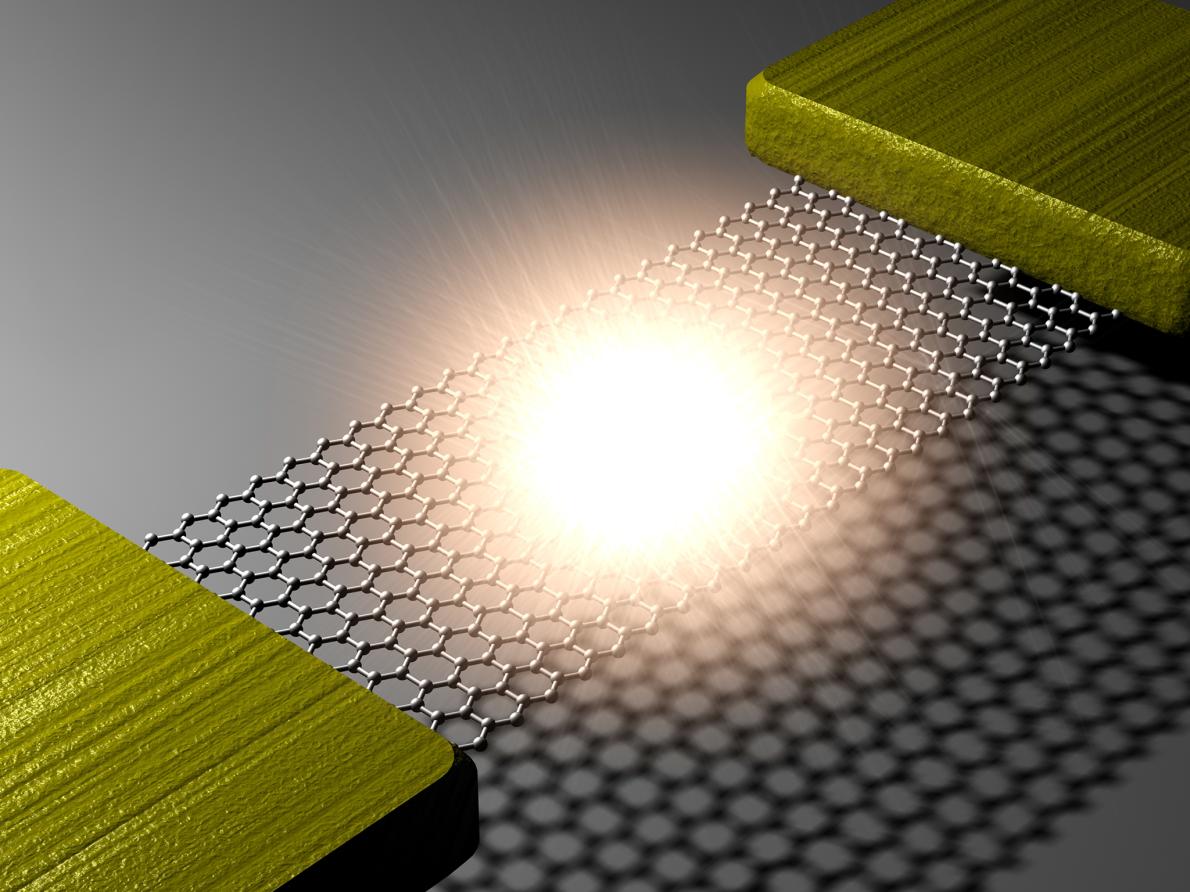Worlds Thinnest Light Bulb using Graphene

Forget about LEDs, because the future lighting may be made from carbon. The researchers of Columbia University have built a light bulb that superheats graphene to produce light. Graphene is an allotrope of carbon in the form of a two-dimensional, atomic-scale lattice in which one atom forms each vertex. It is the essential structural part of other allotropes, including graphite, charcoal, carbon nanotubes, and fullerenes. It can also be measured as an indefinitely large aromatic molecule, and ultimately belongs to flat polycyclic aromatic hydrocarbons family.
Graphene has many amazing properties, and it is about 100 times stronger than the steel with a hypothetical thickness of 3.35Å, which is equivalent to the thickness of the graphene sheet. It conducts heat and electricity efficiently and is nearly transparent.

The researchers have long wanted to create this thinnest and small "light bulb" which can be placed on a chip and it can run on light rather than electric current. The problem was with one of size and temperature, as glowing filament must get extremely hot before they produce visible light. However, this new graphene device is very efficient and result in new ways to make displays.
The Making
When an electric current passes through an incandescent light bulb's thread which is usually made of tungsten the strand heats up and glows. The electrons touching through the material knock touching electrons in the filament's atoms give them energy; these electrons revisit to their previous energy levels and produce light in this process. By cranking up the current-voltage the filament in the light bulb hits temperatures with about 5,400 degrees Fahrenheit (which is 3,000 degrees Celsius) for an incandescent. This is one reason light bulbs also have no air in them or they are filled with an inert gas like argon: At that temperature tungsten would react with the oxygen in the air and simply burn. The new study proved that graphene will essentially eliminate the pathways in which heat can escape and if the graphene is on a substrate, much of the heat will be dissolute to the substrate.
The light emitted from graphene also reflects off the silicon, and the reflected light interferes with the emitted light producing a pattern of release at different wavelengths. However, the other opened possibility to this is: modifying the light by varying the coldness to the silicon. The principle of the graphene is plain, but it took a long time to discover says the scientist.






